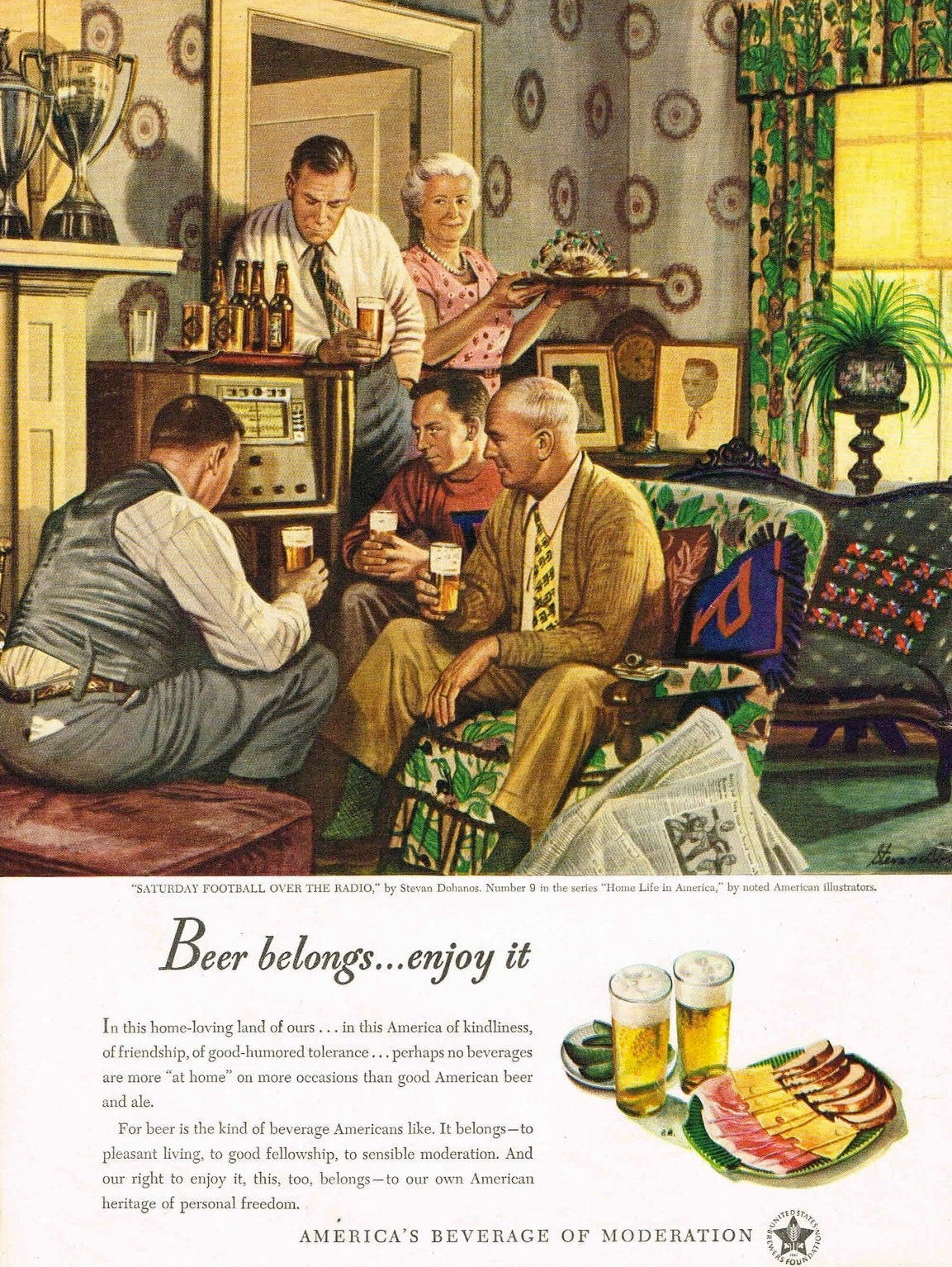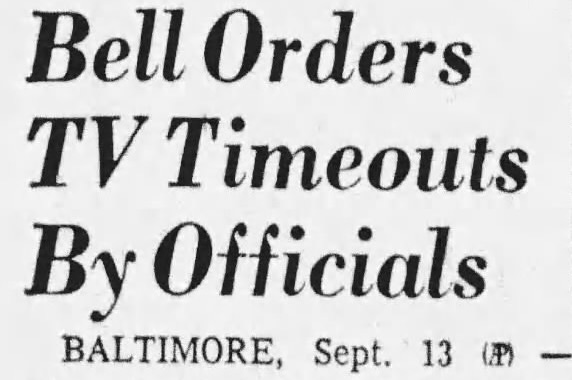Today’s Tidbit… The Birth of TV Timeouts
Today's NFL and NCAA televised games have eight commercial breaks per half. Two happen at the end of the first and third quarters, and two occur at the two-minute warning. Most of the others happen following natural breaks in play:
Field goal attempts
One or two-point conversion attempts
Possession changes by punt, kickoff, or turnover
Injury stoppage
Instant replay challenges
Team-called timeouts
However, if the game flow does not result in the appropriate number of commercial breaks during a half, the television crew can stop the game to insert a commercial break. So, it used to be that only the first two things were certain, death and taxes, there have been three since 1957 and 1958 when TV timeouts came into being.
Radio did not need established radio timeouts. There was enough dead time during the broadcasts that announcers could insert commercial messages between plays, quickly switching back to game coverage as required. Television did not have that luxury, given the technology of the time. Television could show game coverage or commercials, not both. Quickly switching back and forth was not an option, so the need for dedicated TV timeouts was straightforward.
The television station or network needed a certain number of commercial breaks per game to sell the advertising that paid their bills and the rights fees for the broadcasts. Early on, the networks did not have announcers on multi-million dollar contracts, they had lower production costs, and the NFL or NCAA rights fees were much lower than today. However, as leagues sought increasingly higher rights fees, one way to generate that money was to insert more commercial breaks per game. We now have sixteen commercial breaks, not including those during pregame, halftime, and postgame activities.
Seeking to spread the timeouts through the games, the networks wanted to air commercials for an established number of minutes per half. That situation led to the invention of the TV timeout during the 1957-1958 NBA season. The NBA took a use-it-or-lose-it approach to timeouts. Coaches took timeouts at the time they chose but had to take at least one before a certain amount of time elapsed on the clock. If the coach failed to call a timeout by then, the officials called one and charged it to the offending team. Meanwhile, some TV timeouts occurred during NCAA football games in 1957 because media members commented about games being controlled by TV directors talking with the game officials along the sideline.
NFL Commissioner Bert Bell recognized these requirements also applied to professional football, leading to the NFL first using TV timeouts in 1958. The NFL empowered officials to call a TV timeout if neither team scored or called a timeout in the first ten minutes of the first and third quarters. There were scattered complaints about inserting the single timeout that interrupted the game's natural pace. They saw it as an intrusion, which it was, but it is inconceivable now that one could watch ten minutes of an NFL game clock elapse without seeing a commercial break.
Still, it was a shock to the system at the time when fans in the stands suddenly had to sit on their hands so those sitting at home could watch a commercial. Red Smith asked:
If breweries can stop the game then what comes next?
Will they tell the Colts to draft a halfback from Colorado? Will they ask Paul Brown to hold the score down so the audience doesn't get restless?
'Red Smith's Views on Sports, Sponsor's Time-Out,' Honolulu Star-Bulletin, October 22, 1958.
Things have not progressed or digressed to that point Smith feared, though a reader writing to Smith noted that he did not expect to see "the Yankees wear slogans on the back of their shirts, like members of a bowling team." That situation exists today with corporate logos on MLB sleeves and batting helmets. American football has not allowed non-apparel commercial logos on uniforms, though the CFL and virtually every other sports league does.
Finally, during the same period that leagues allowed television to stop games as needed, they also began ceding the power to determine when games started. For example, the television powers-that-be shifted the start of the 1958 Cal-Washington State game from its traditional 2:00 PM start to 1:00 PM to accommodate the network's needs better. Today, the networks determine start times one or two weeks before games to maximize their audiences and payouts to the leagues.
Commercials are the price we pay to avoid paying admission, though the number of commercials shown on packages for which we pay a subscription suggests even that bargain no longer works very well.
Football Archaeology is reader-supported. Click here to buy one of my books or otherwise support the site.




That's one terrific floor model in that beer ad. Looks like a Grundig-Majestic. Perhaps one of the men depicted picked it up in Germany at war's end ..